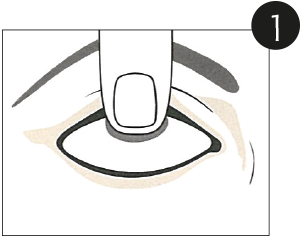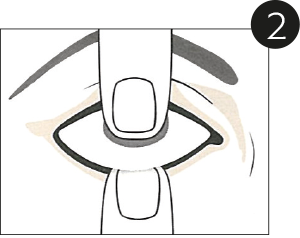
When will your prosthesis need to be replaced?
Over time the surface of your eye prosthesis deteriorates, which is only natural and to be expected. This process is not only caused by tear fluid but also depends on the conditions in your eye socket, secretion or inadequate lid closure.
On average, glass prostheses can be worn 12 months, acrylic prostheses for a period that is significantly longer. If you are exposed to difficult environmental conditions, if you work as a farmer or carpenter for example, the prosthesis may need to be replaced earlier. Increased drainage may be a first sign. Failure to replace the prosthesis in good time may lead to considerable discomfort.
For reasons related to growth, children need to have a new glass prosthesis (glass) fitted more often or need to have it enlarged (acrylic). By permanently fitting a new prosthesis or by adapting its size, the surrounding region of the eye can be stimulated to grow, keeping pace with the healthy side, so that both sides of the face look almost the same once the children have become adults.
Maintenance and Care of Your Glass Prosthesis
Cleanse your glass prosthesis thoroughly once a day with clean lukewarm water. Please make sure that the water is never too hot or icy cold and never use acidic fluids or hard or abrasive tools for cleaning. Only ever use cleaning agents recommended by your ocularists if you cannot get your prosthesis properly clean using the above methods. Thoroughly rinse your prosthesis upon cleaning using a soft paper tissue and wet it slightly before reinsertion.
Store your prosthesis dry in an enclosed container when you do not wear it. Please consult your ocularist on whether you can wear your prosthesis during the day as well as during the night time.
Maintenance and Care of Your Acrylic Prosthesis.
PMMA ocular prostheses can be worn permanently and should only be taken out once a month for cleaning. Use a pH neutral baby shampoo and gently rub the prosthesis thoroughly between your fingers. Any water temperature will work. Then rinse your prosthesis with fresh water and place it back into the socket.
Keep your acrylic ocular prosthesis in an enclosed container when you do not wear it, such as the containers we provide you with at our practice.

How to Insert and Remove Your Prosthesis.
At the beginning You may find inserting your prosthesis rather difficult. Don’t worry, however, with time it will become much easier. Consult your ocularist if, in spite of this, you still are experiencing problems.
Please bear in mind that you should always wash your hands thoroughly before you touch the prosthesis with your fingers. Acrylic prostheses may get scratched and glass prostheses may break which is why they should always be inserted and removed while leaning over something soft (such as a bath towel for example). Never handle your prosthesis over the wash basin, tiles or stone floors!
This is how you insert your prosthesis.





And this is how you remove your prothesis.



More important information.
Where can you find help if you experience problems with your artificial eye in spite of all the precautions? Please be reminded that your ophthalmologist and your ocularist are the only specialists who have the skills which are necessary to provide help.
Damaged ocular prosthesis
Unfortunately, it is not possible to repair a broken glass prosthesis. Never insert a damaged glass prosthesis into your socket as you risk injury. Depending on the circumstances, it may be possible to rework or polish a damaged acrylic prosthesis. However, this is should be decided by your ocularist.
Broken glass prosthesis
Please collect all shards of your broken prosthesis and take them with you to your ocularist. These can still serve as as a useful model to work from when your ocularist fits a new one. Make sure you wear a spare prosthesis until you receive a new prosthesis to avoid socket shrinkage. Please get in touch with us if you do not have a spare prosthesis at hand.
Inflammation of the socket
Inflamed sockets may be caused by inadequate lid closure or by prostheses which have been worn for too long at a time. Deposit build-up, scratches, surface roughness or environmental factors may also lead to irritation or inflammation. Please consult your ophthalmologist or ocularist.
Loss of Prosthesis
And, again, if you lose your prosthesis, please get in touch to make an appointment with your ocularist to have a new prosthesis fitted.




